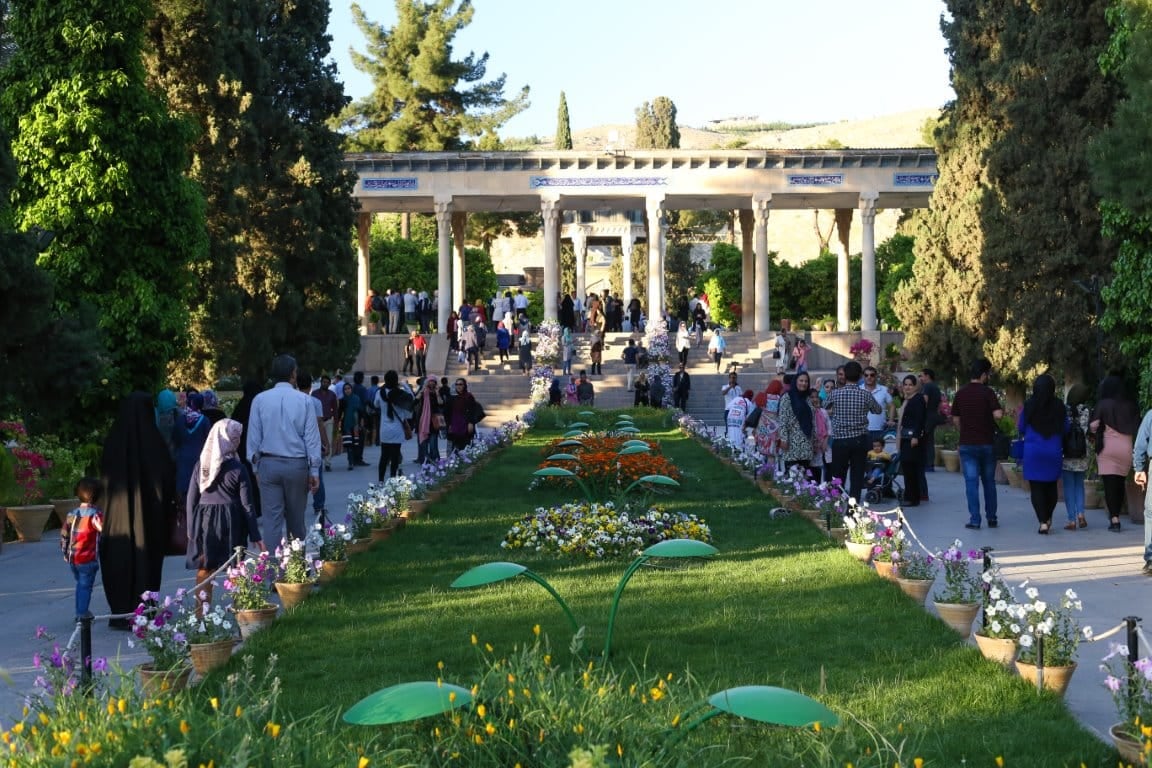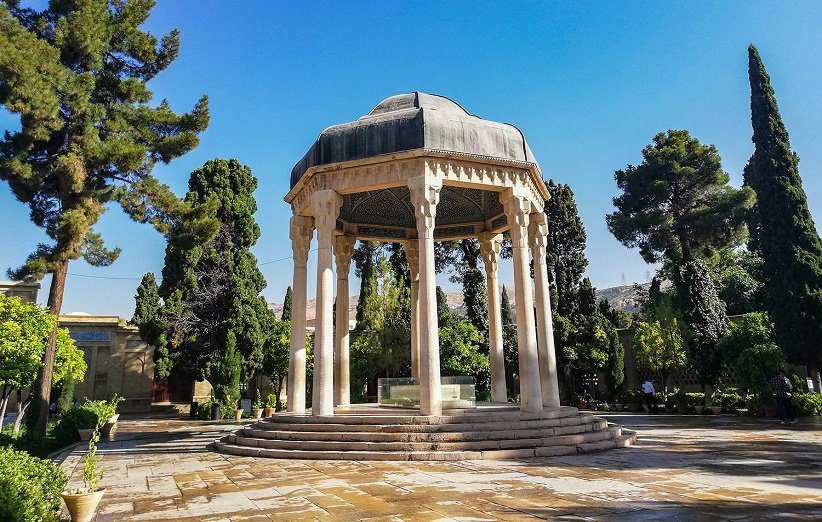
Hafez had a huge influence on Persian literature and the whole Iranian culture. 600 years after his death, any traveler coming to Iran can still see how important Hafez’s poetry.
We know quite little about Hafez’s life which remains surrounded by mystery. Hafez-e Shirazi was born in Shiraz in 1325 or 1327, under the Muzaffarid dynasty. He died around the age of 63-65, in 1390, in Shiraz.
Contents
Characteristic features of Hafez
His name, Hafez, can take the meaning of “the memorizer”; A name that comes from the fact that, at an early age, Hafez memorized the Quran by heart, only by listening to his father’s recitations it is said. Other sources argue that Hafez also memorized by heart the works of several Persian poets who preceded him: Rumi, Saadi, Farid ud-Din and Nizami.

Hafez was a poet at the court for part of his life, benefiting from the patronage of the successive rulers of Shiraz. Yet, maybe because of his criticism formed with irony, he fell in disgrace in 1368-69 and had to wait 20 years to regain his status at the court, a few years before his death.
Hafez was a scholar who knew about science, religion, language, literature, and music. But most importantly, one of the characteristic features of Hafez’s life and poetry is that he was a Sufi. Sufism is a thinking that pleads for contemplation and spiritual development to reach an awareness of God’s presence. This Islamic mystical movement was a guiding principle of his life and nourished all his work.
Hafez in Nowadays’ Iran
Hafez’s poetry has inspired poets and artists all over the world, including some of the most famous writers such as Goethe and Thoreau. Yet, his impact and legacy go well beyond literature, and Hafez truly impregnated Persian culture in a way no other has.
To measure how important Hafez is to Iranians, it is as simple as stepping into any house in Iran: there is a 99.9% chance to find the Divan of Hafez there. Almost all Iranians own one, or several copies of the Divan. It is almost always present, next to the Quran, for important celebrations such as Nowruz (where it’s commonly part of the Haft Sin table) and Yalda.

To gauge Hafez’s importance, you can make another test and ask any Iranian you meet to tell you one verse of Hafez. It is unlikely that you will meet someone unable to quote him. Indeed, many Iranians have learned by heart his poems and are commonly used somehow as proverbs. Hafez’s poetry is then commonly said and heard in everyday life, in any circumstances, showing how deeply loved Hafez still is by Iranians.
Fal-e Hafez

Not only Iranians can quote Hafez, but they also attribute divinatory power to the Divan. Between tradition and real belief, many Iranians commonly practice “Fal-e Hafez”, a kind of fortune-telling based on Hafez’s poems. It is one of the rituals of Nowruz and Yalda’s nights: someone opens the Divan of Hafez on a random page and reads the poem written on it. This poem is believed to predict the events that will occur in the person’s life.
Hafez in Persian culture
Of course, another sign that shows how important is Hafez to Iranians is its constant use, for decades, in all arts. One can find his poetry in numerous visual art, in Persian calligraphy, and in all fields of music, from traditional to modern music. In Persian classical music, the poets Hafez and Saadi have been the main sources of “avaz” (a musical mode of Persian music).

And even if he is reminded every day in Iran, there is still an official national day to celebrate his work. October the 12th is indeed Hafez Day in Iran. During that day, many events of poetry reading are organized all around the country, and people, whether they are scholars, writers or simple admirers of his work, gather in different locations to share the power of his words.